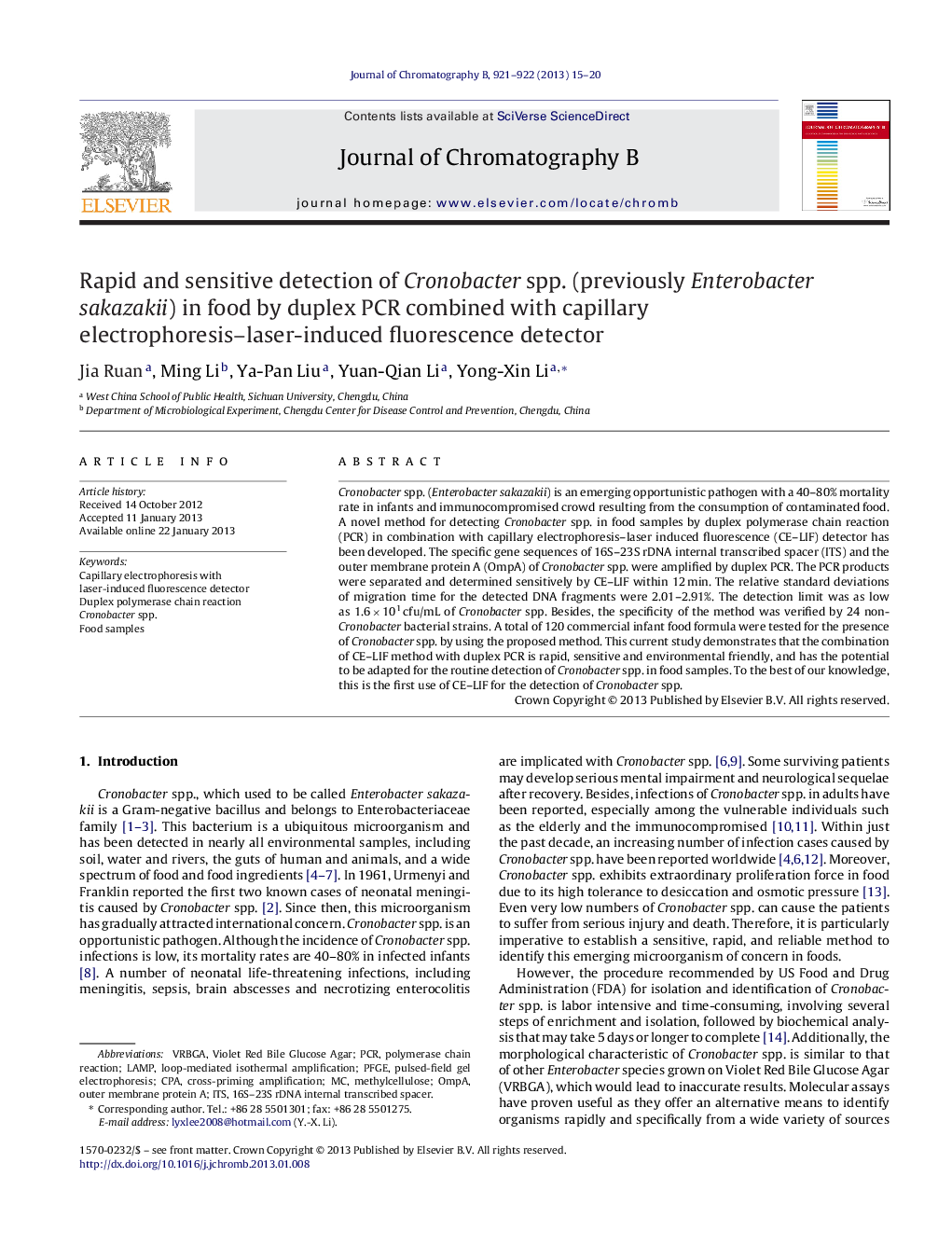| Article ID | Journal | Published Year | Pages | File Type |
|---|---|---|---|---|
| 1212801 | Journal of Chromatography B | 2013 | 6 Pages |
Cronobacter spp. (Enterobacter sakazakii) is an emerging opportunistic pathogen with a 40–80% mortality rate in infants and immunocompromised crowd resulting from the consumption of contaminated food. A novel method for detecting Cronobacter spp. in food samples by duplex polymerase chain reaction (PCR) in combination with capillary electrophoresis–laser induced fluorescence (CE–LIF) detector has been developed. The specific gene sequences of 16S–23S rDNA internal transcribed spacer (ITS) and the outer membrane protein A (OmpA) of Cronobacter spp. were amplified by duplex PCR. The PCR products were separated and determined sensitively by CE–LIF within 12 min. The relative standard deviations of migration time for the detected DNA fragments were 2.01–2.91%. The detection limit was as low as 1.6 × 101 cfu/mL of Cronobacter spp. Besides, the specificity of the method was verified by 24 non-Cronobacter bacterial strains. A total of 120 commercial infant food formula were tested for the presence of Cronobacter spp. by using the proposed method. This current study demonstrates that the combination of CE–LIF method with duplex PCR is rapid, sensitive and environmental friendly, and has the potential to be adapted for the routine detection of Cronobacter spp. in food samples. To the best of our knowledge, this is the first use of CE–LIF for the detection of Cronobacter spp.
► Cronobacter spp. in food was determined by CE–LIF. ► Multiplex PCR parameters were optimized by CE in a rapid and intuitive way. ► Molecular technique combined with CE–LIF improved specificity and sensitivity. ► 120 infant food formula in China were tested for the presence of Cronobacter spp. ► This method was cheap, environmental friendly and suitable for routine analysis.
